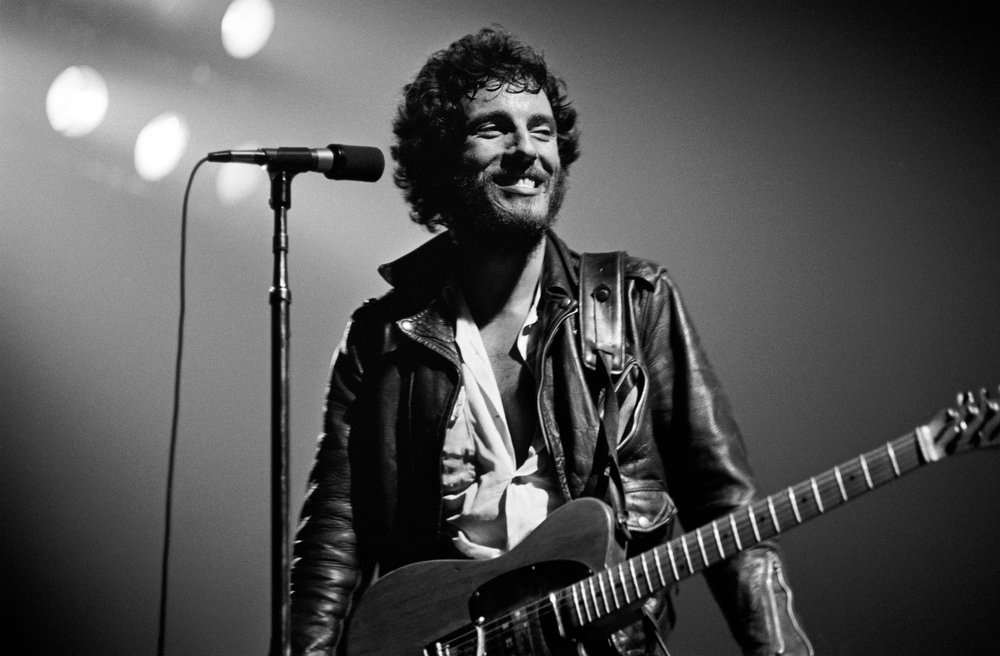50 years later, what Bruce Springsteen’s 'Born to Run' means to New Jersey
Aug. 25, 2025, 4:13 p.m.
The Boss' third album helped turn the Garden State favorite into an international superstar.

“’Cause tramps like us, baby, we were born to run.”
50 years ago today, Bruce Springsteen unveiled those lyrics to the world, with the album “Born to Run” hitting the shelves on Aug. 25, 1975.
It is the singer’s third album, but the one that catapulted him from a favorite musician playing at venues like The Stone Pony in Asbury Park, New Jersey to an international superstar. According to the Recording Industry Association of America, the album is certified as seven-times platinum.
Morning Edition Host Michael Hill spoke with Eileen Chapman, the director of Bruce Springsteen Archives and Center for American Music at Monmouth University, to understand why Springsteen resonates so deeply with Garden State residents and why the album is so important. Chapman also serves on the city council of Asbury Park.
Michael Hill: Before we dive into Bruce, set the scene for us. What was Asbury Park like in the 1970s? What was The Stone Pony?
Eileen Chapman: So in the 1970s, Asbury Park was one of your typical Jersey Shore seaside communities. The boardwalk was filled with rides and concert venues, and The Stone Pony was, of course, located right across the street from the boardwalk. It was the place where everyone came to hear music. People from all over the globe.
Who was Bruce Springsteen in the leadup to this album?
So Bruce Springsteen was very well known on the East coast, you know, coming from Asbury Park and watching him begin to play in coffee houses.
He was a musician out of Asbury Park who got signed and became well known, became famous. He was able to take his talent to a larger demographic and a huge fan base after the release of “Greetings from Asbury Park, N.J.” and “The Wild, the Innocent, and the E. Street Shuffle.” Everyone in Asbury Park was thrilled to watch Bruce's success.
But then, “Born to Run” came out. It took it just to a whole new stratosphere.
Was it an instant success?
It was a fairly instant success. You know, when Bruce released “Born to Run,” he didn't have a lot of support from his record label at the time. He knew what was on the line and there was a letter that was circulated at Columbia Records suggesting that they put all of their promotional assets into Billy Joel, who was an up-and-coming star right around the same time, and to not invest in Bruce Springsteen. He’d had two albums that just did not sell well. His manager, Mike Appel, took a lot of the promotional aspects of this release into his own hands by sending handmade cassette tapes out to radio DJs, and really helping to spread the word from Asbury Park in the East Coast to a larger demographic across the country and even globally.
How did you come across this album and how did you feel about it the first time you heard it?
Well, ironically, the first time I heard this album played on the radio, I was standing on Ocean Avenue near the Stone Pony, and there was a car stopped at a red light, and “Born to Run” was being played on the radio.
Eileen, what do you think Bruce Springsteen and his E Street Band have meant to the image and the reputation of the Jersey Shore over the last several decades?
Bruce Springsteen and the E Street band are still local guys. As a council person in Asbury Park, I often talk to people who come to visit and I ask them, “What brought you here? Why are you here?” And in many cases it's, “We are fans of Bruce Springsteen and we wanted to see the places that he wrote about.”
It's been a pilgrimage for so many people to come to the Jersey Shore and visit the Stone Pony and visit the boardwalk. It's been just such an amazing tie.
This company throws $30 mystery concerts around NYC, so I tried it 8,000 pipes and a decade in the making: Manhattan's Trinity Church has a new organ